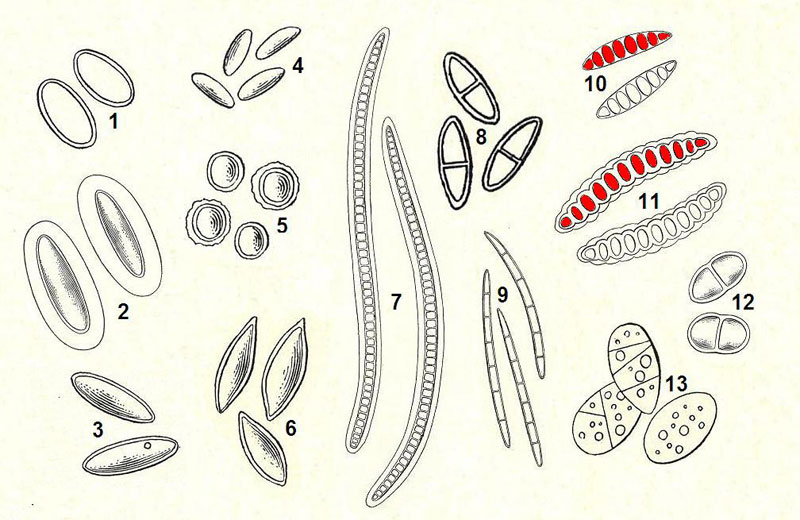Spores - simple or transversely septate (from Albert Schneider's A text-book of general lichenology)
Technically, a simple spore is one that is not divided internally by any cross walls. The spore walls may be thin to thick. Transversely septate spores have cross walls across the shorter dimension of the spore. There's only one cross-wall (or septum) in number 8, which divides the spore into two segments. By contrast the spores in drawing 7 have numerous transverse septa, with the long, worm-like spore therefore divided into numerous segments. The cross-walls are not always of uniform thickness. In figure 10 the septa are centrally thinner, so giving each segment a thicker middle but thinner edges. One spore in figure 10 has the segments coloured red to better show that feature and the segments of one spore in figure 11 have also been coloured red.
1. Parmelia perlatum; 2. Megalospora sanguinaria; 3. Endocarpon miniatum; 4. Xylographa parallela; 5. Coniocybe pallida; 6. Psoroma hypnorum; 7. Conotrema urceolatum; 8. Speerschneidera euploca; 9. Haematomma ventosa (sic); 10. Trypethelium virens; 11. Graphis scripta; 12. Catillaria grossa; 13. Omphalaria umbella. (Note that one spore lacks cross walls. All spores have globular contents of various sizes.)
Note: not all to the same scale
Albert Schneider's A text-book of general lichenology, published in Binghamton in 1897 by Willard N. Clute & Co. illustrates the structural features of various lichens from the north-eastern United States.
![An Australian Government Initiative [logo]](/images/austgovt_brown_90px.gif)


